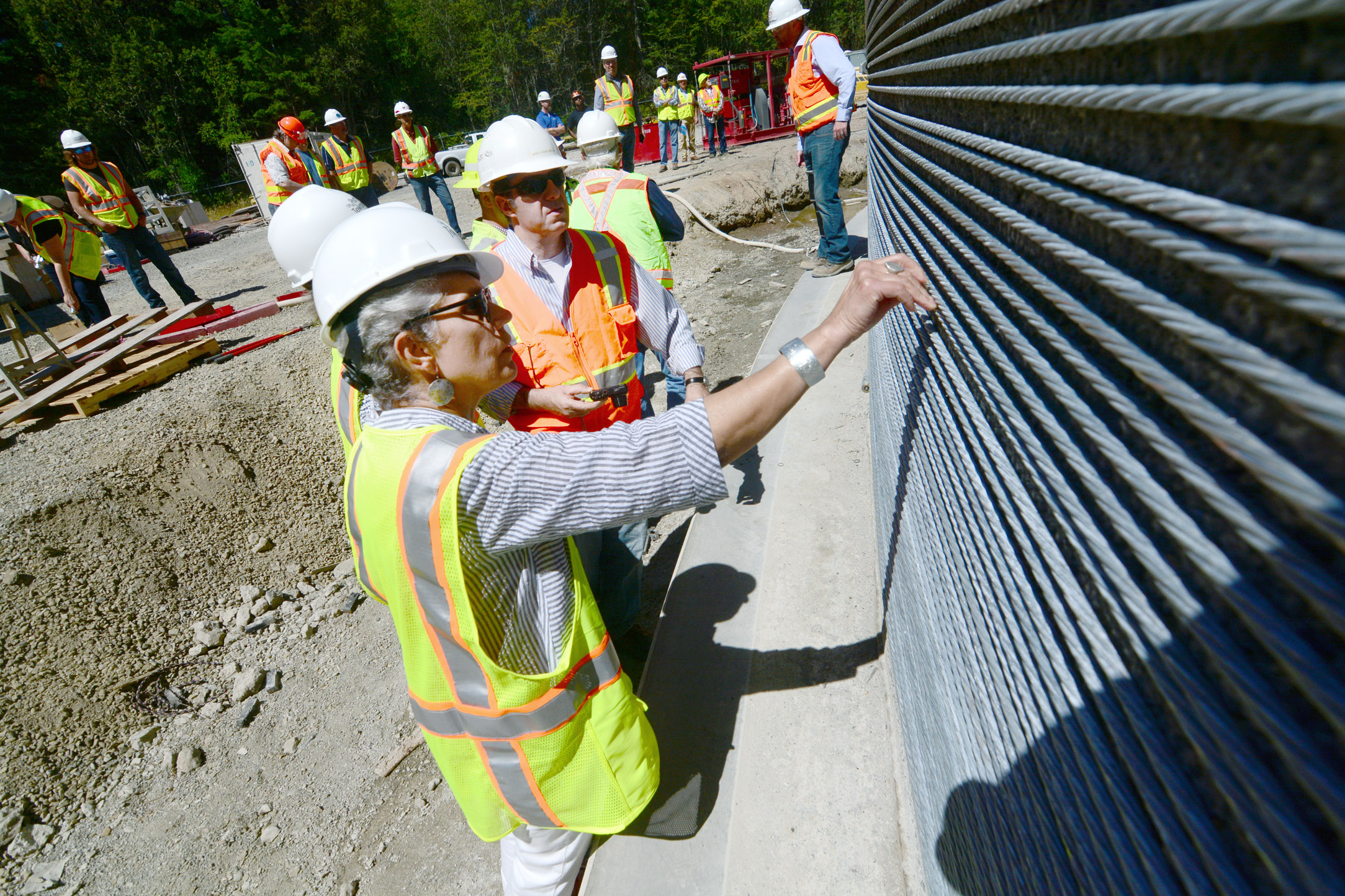PORT TOWNSEND –– City officials got to take a close look Wednesday at construction of the city’s water treatment facility and reservoir projects.
City Council members and city staff toured the approximately $24 million new drinking water treatment facility and 5 million-gallon reservoir, both being built along 20th Street near Howard Street.
When city officials arrived to the reservoir, DN Tanks was pre-stressing the tank by wrapping about 35 miles — or 185,000 linear feet — of galvanized strand, a steel cable, around the tank.
“I kind of geek out on this technology,” said Mayor Deborah Stinson.
“I don’t know much about it, but it fascinates me in seeing how things are actually built.”
Stinson said the tour gave her a better idea of the engineering behind the projects.
“Now I really understand it and feel more confident, having seen it, understanding the engineering behind it,” she said.
The two projects should be operational by the end of October, said Ken Clow, city public works director.
Work will continue on both the reservoir and water treatment facility, but water coming out of faucets will have to run through both the reservoir and water treatment facility.
Both projects should come in under $24 million and are funded primarily by those who use the water.
The treatment facility is expected to cost about $16 million and the reservoir is expected to cost about $8 million.
The construction of the new facility is funded by a combination of grants and low-interest loans to be paid off within 20 years, along with a monthly capital surcharge fee.
The monthly fee assesses each customer within city limits $18 and each outside the city $21.60.
These rates will respectively increase to $24 and $28.80 in 2018.
The contractor is Stellar J Corp. of Woodland.
The new water treatment facility allows the city to meet federal regulations by providing filtered water, Clow said.
Currently, the city’s water is unfiltered, he said.
The new facility will use a membrane filtration system to filter out cryptosporidium, a microscopic parasite that is resistant to chlorine treatment, and other impurities, he said.
Currently, the water is piped from the Big Quilcene and Little Quilcene rivers to the City Lake reservoir, where it is chlorinated, then routed either to the Port Townsend Paper Corp. or to the distribution facility at the site of the future filtration plant.
In the new system, the water will bypass City Lake and go directly to the facility, where chlorination and filtration will occur.
Under the new system, Port Townsend Paper Corp. will need to construct its own water conduit that will be located before the water goes to the new facility.
The new reservoir is being built to withstand an earthquake, unlike its predecessor.
The previous reservoir, which will be demolished, was built to last about 30 years and is now nearing the end of its design life, said Ian Jablonski, water resources manager.
The tank was built in 1979.
“It was not designed as a 100-year tank,” he said.
________
Reporter Jesse Major can be reached at 360-385-2335, ext. 5550, or at jmajor@peninsuladailynews.com.

